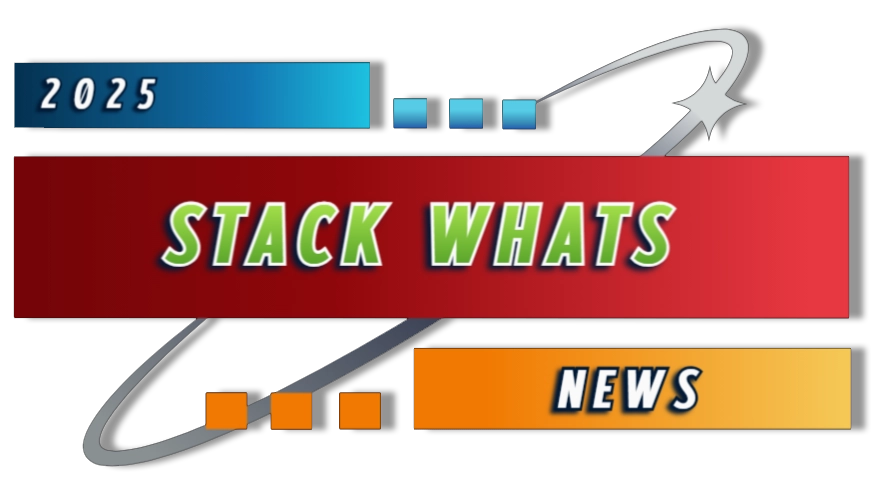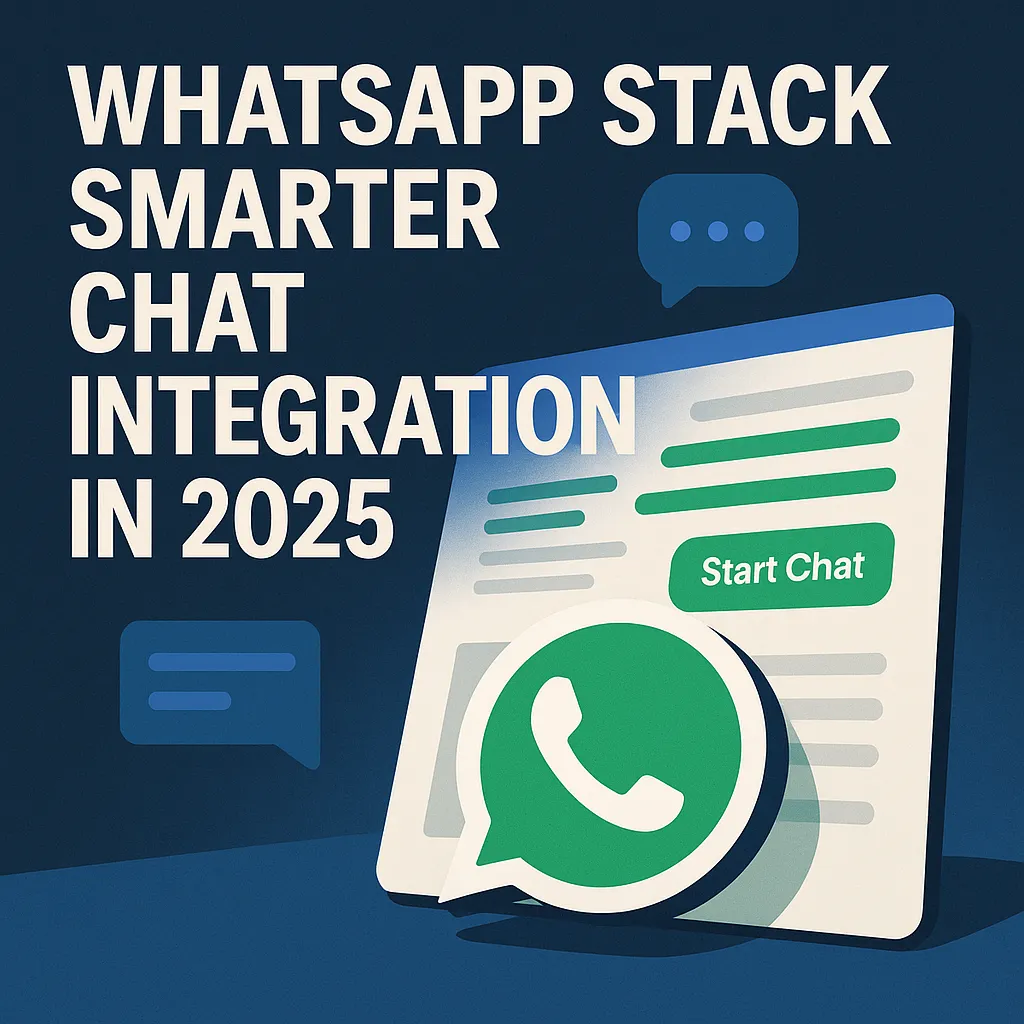Fast replies aren’t optional anymore — they’re expected. Whether you’re managing a Shopify store, a WordPress blog, or a Webflow portfolio, users want instant, no-hassle ways to connect. That’s where WhatsApp Stack steps in: a streamlined, all-in-one system that turns any site into a WhatsApp-powered communication hub.
No more juggling disconnected plugins, bloated live chat tools, or slow email forms. With a unified WhatsApp widget, smart triggers, and lightweight scripts, you can launch real-time conversations in just minutes — with minimal setup and maximum impact.
What Is WhatsApp Stack, Exactly?
Think of WhatsApp Stack as a bundled toolkit — a combination of plugins, widgets, triggers, and smart design logic built to embed WhatsApp chat for website use without coding headaches.
Here’s what a standard WhatsApp Stack offers:
- Floating WhatsApp widget or icon
- Pre-filled messages and CTA buttons
- Smart visibility settings by page or device
- Lightweight, mobile-friendly JavaScript
- Broad platform support (WordPress, Shopify, HTML, Webflow)
In short, it’s the fastest route to adding functional, responsive, and branded chat to your site — all via the platform your users already trust.
Why Choose a WhatsApp Stack Approach?
You might be wondering — why not just install a simple WhatsApp plugin for website and move on? Here’s why going “stack” is the smarter move:
1. Seamless User Experience
Instead of duct-taping plugins together, the WhatsApp Stack gives your site a single, unified chat solution across all devices.
2. Faster Site Performance
Most chat tools load hefty scripts. WhatsApp Stack stays lean by only including what’s necessary.
3. Familiarity for Users
There’s no learning curve. Everyone knows how to use WhatsApp, which lowers hesitation and boosts interaction.
4. Boost in Conversions
Sites using a floating WhatsApp widget have seen up to 25% more engagement — especially on landing pages and product sections.
Core Elements of an Effective WhatsApp Stack
Building a WhatsApp Stack isn’t about throwing tools together. You’ll need these key components:
- Floating Button or Icon: Always visible but non-intrusive
- Device-Specific Behavior: Customize the display for mobile vs. desktop
- Pre-Filled Messages: Save users from typing — help them start the chat
- Page Targeting: Show different buttons depending on the page or scroll depth
- Analytics Integration: Track button clicks, conversions, and user sessions
Together, these features create a highly tuned WhatsApp chat for website experience.
Top Platforms That Support WhatsApp Stack Setup
You don’t need to build this from scratch. Many platforms now support full-stack implementations with ease.
1. StackWhats.com
Best for: Custom websites and no-code users
- Offers visual widget builders
- Supports branding, multiple agents, and pre-filled messages
- Generates clean embed code (no bloat)
- Includes analytics tagging and mobile optimization
This platform was made for marketers and devs who want full control without complexity.
2. WordPress with Plugins
If you use WordPress, these tools form your WhatsApp Stack:
- Click to Chat: Great for custom messages and WooCommerce support
- Join.chat: Offers animations, auto-triggers, and deep site integration
- Elementor or WPCode: Add widgets manually with custom styling
Perfect if you want plugin-level simplicity without third-party branding.
3. Shopify Apps
For Shopify users, the WhatsApp plugin for website comes in the form of:
- WhatsApp Chat + Abandoned Cart: Recovers lost sales
- Chaty: Combines WhatsApp, Messenger, and more
Shopify stacks offer sales-driven features like multilingual messaging, follow-up automation, and product-specific chat triggers.
4. Webflow or HTML Sites
You don’t need a CMS to build a WhatsApp Stack. Just:
- Use StackWhats or GetButton for widget generation
- Add your number with
https://wa.me/links - Use CSS for floating behavior and responsive display
It’s a one-line embed — simple and universal.
How to Build a WhatsApp Stack: Step-by-Step
Ready to create your own? Here’s a five-step guide.
Step 1: Generate Your WhatsApp Link
Use this format:https://wa.me/1234567890
(Replace with your full international number — no plus sign or spaces.)
Step 2: Design the Widget
Platforms like StackWhats or GetButton let you set:
- Widget color and placement
- CTA text
- Device rules
- Pre-filled messages
Step 3: Embed the Code
Paste the widget script into your site’s footer (before </body>). WordPress users can use WPCode or a custom HTML block.
Step 4: Set Display Conditions
Want it to appear only on product pages? Or only after 15 seconds? Set rules using built-in logic or Google Tag Manager.
Step 5: Monitor with Analytics
Use UTM tags or connect with Facebook Pixel to track who’s clicking and when.
Best Practices for WhatsApp Stack Setup
Getting it live is just the start — make it work better by following these tips:
- Add visible hours: Let users know when you’re online
- Customize per page: Don’t show the same widget everywhere
- Update default text: Match chat messages to page content
- Avoid blocking UI: Keep buttons away from popups or menus
- Include privacy info: Let users know how chat data is handled
Common Mistakes to Avoid
Even the best setups go wrong without attention to detail:
- Using the wrong phone format (must be full international number)
- Forgetting
target="_blank"so the chat doesn’t replace your site - Leaving widgets active outside working hours
- Overlapping chat icons with navigation buttons
- Skipping mobile testing — most users will chat from phones
What’s Next for WhatsApp Stack in 2025?
The future of WhatsApp chat integration is getting smarter — and more powerful. Look out for:
- AI-powered autoresponders
- CRM and eCommerce platform integrations
- Voice or video chat initiation
- WhatsApp Pay support for transactions
- Behavior-triggered chat flows using analytics data
If you’re serious about scaling, investing in a modern WhatsApp plugin for website built on stack principles gives you a head start.

